- Books Name
- class 8 th Mathematics Book
- Publication
- ReginaTagebücher
- Course
- CBSE Class 8
- Subject
- Mathmatics
Square Root
Square root
square root is the inverse operation of squaring.
That is, the square root is the inverse operation of a square.
The square root of a number is represented by the symbol of √.
The square root of a number n can be written as n−−√ (or) n12.
The square of 2 is 4. That is 22=4.
The square root (inverse) of 4 is 2. That is 4–√=2.
Positive root and Negative root
If we square the negative number, we get the positive number as a product.
(−1)2=(−1)×(−1)=1, because (−)×(−)=+
Example:(−5)2=(−5)×(−5)=25=(5)2
25−−√=−5; 25−−√=5
25−−√=±5
squares and square roots of the first 20 numbers.
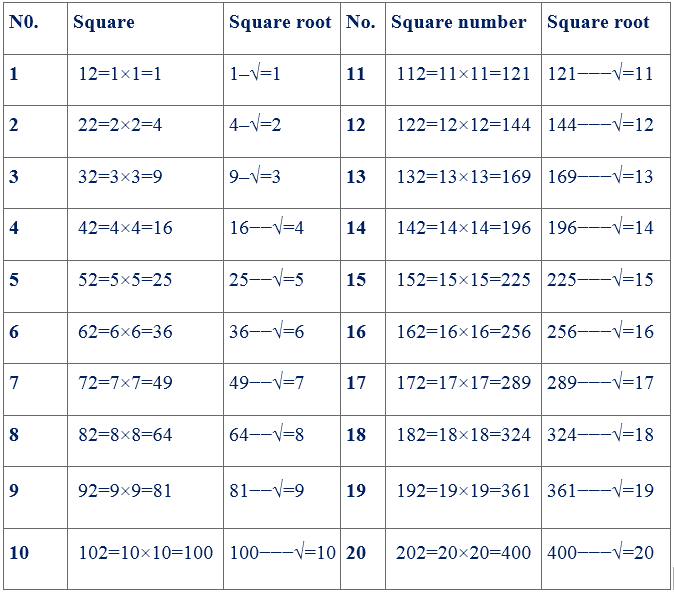
Square root by repeated subtraction of successive odd numbers,
square number can be written as the sum of consecutive odd numbers starting from 1.
We can obtain the square root of a number by repeatedly subtracting the successive odd numbers (starting from 1) from the given square number till we reach zero.
At one particular step, we get zero. The step where we get zero is the square root of a given number.
If we did not get zero, the given number is not a perfect square.
Example:
Obtain the square root of 49 by repeated subtraction method.
Solution:
The given number is 49.
We need to find the square root of 49 by the repeated subtraction method.
Subtract the given number by the odd numbers starting from 1 till we get 0.
Step 1: 49−1=48
Step 2: 48−3=45
Step 3: 45−5=40
Step 4: 40−7=33
Step 5: 33−9=24
Step 6: 24−11=13
Step 7: 13−13=0
Here we get zero on the 7th step. That is 49−−√=7.
Therefore, the square root of 49 is 7.
Square root through prime factorisation
Steps to find the square root of a number:
Step 1: Write the given natural number as a product of prime factors.
Step 2: Group the factors in pairs so that both factors in each pair are equal.
Step 3: Now, see whether some factors are leftover or not. If no factor is leftover in grouping, then the given number is a perfect square. Otherwise, it is not a perfect square.
Step 4: Take one factor from each group and multiply them to obtain the number whose square is the given number.
Example:
Find √324
Step 1: Write 324 as a product of prime factors.
324=2×2×3×3×3×3
Step 2: Group the prime factors.
324=(2×2)×(3×3)×(3×3)
Step 3: Here, no factor is leftover in grouping.
So, the given number is a perfect square.
Step 4: Now, take one factor commonly from each group.
324−−−√ = 2×3×3
324−−−√ = 18
Therefore, the square root of 324−−−√ is 18.
Finding the square root of a number by long division method
Steps to find the square root using the long division method:
Step 1: Starting with the digit in the unit's position, group the digits in pairs. Each pair and the
remaining digit (if any) is called a period. Starting from the right of the given number, place a bar over each pair of digits. If the number of digits is odd, the extreme left digit may not have a bar sign above it. For example, 2 34¯¯¯¯.
Step 2: Recognise the largest number whose square is equal to or slightly less than the first period. This number should be used as both a divisor and a quotient.
Step 3: Subtract the product of the divisor and the quotient from the first period and bring down the next period to the right of the remainder. This becomes the new dividend.
Step 4: The new divisor is created by multiplying the quotient by two and adding a suitable digit to it, which is also the quotient's next digit. The product of the new divisor and this digit is equal to or less than the new dividend.
Step 5: Repeat steps 2, 3 and 4 till all the periods have been taken up. The final obtained quotient is the square root of the given number.
Example:
Find the square root of 65536.
Solution:
Step 1: Group the digits in pairs and place a bar over each pair of digits. The given number digits is odd, so the extreme left digit does not have a bar sign above it. That is, 6 55¯¯ 36¯¯.
Step 2: The extreme left number here is 6. The largest number whose square is equal to or slightly less than 6 is 2. This number should be used as both a divisor and a quotient.
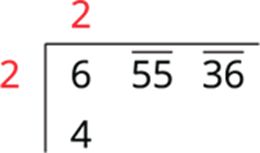
Step 3: Subtract the product of the divisor and the quotient from the first period and bring down the next period to the right of the remainder. That is 255. This becomes the new dividend.
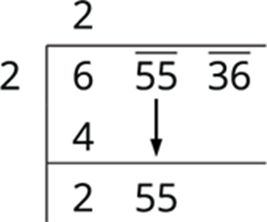
Step 4: Find the new divisor, multiply the earlier quotient (2) by 2 (always) and write it, leaving a blank space next to it.
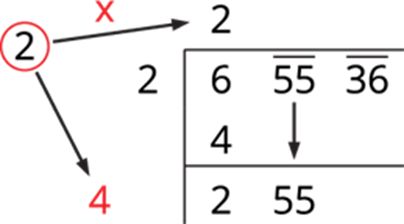
Step 5: The new divisor is 5, followed by a digit. We should choose this digit next to 4 such that the new quotient multiplied by the new divisor will be less than or equal to 255.
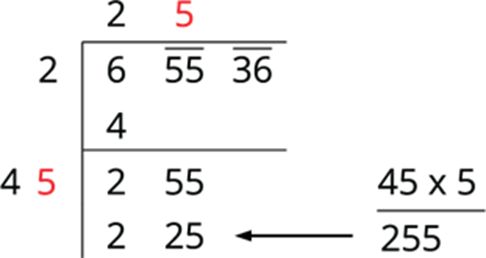
Now, subtract 225 from 255 and bring down the next period to the right of the remainder. That is 3036. This becomes the new dividend.
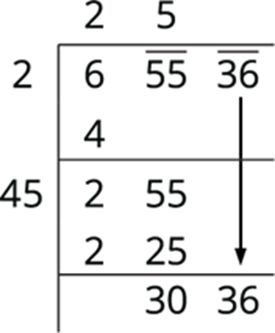
To find the new divisor, multiply the earlier quotient (25) by 2 (always) and write it, leaving a blank space next.
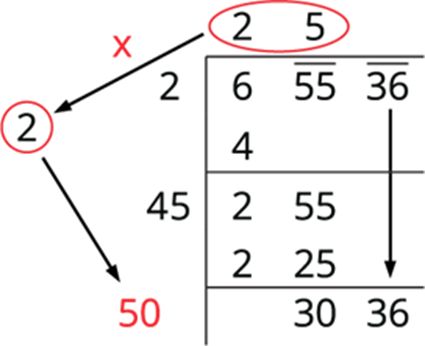
The new divisor is 50, followed by a digit. The required digit here has to be 6. We put 6 in the blank space and write 3036 below 3036 and subtract to get the remainder 0.
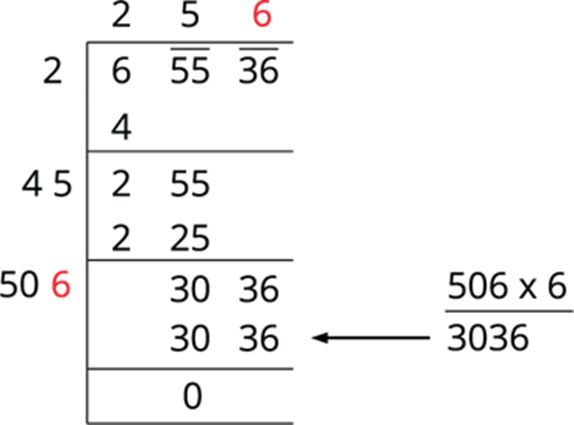
Therefore, √65536 = 256.
Number of digits in the square root of a perfect square number
To find the number of digits in the square root without calculation:
Case I: If n is the number of digits of a number and n is odd:
Number of digits in the square root of the number = n+12
Case II: If n is the number of digits of a number and n is even:
Number of digits in the square root of the number = n2
Example:
1. Find the number of digits in the square root of 196.
Solution:
Number of digits, (n)=3
Since n is odd:
Number of digits in the square root of the number = n+12
= 3+12
= 42
= 2
Therefore, the number of digits in the square root of 196 is 2.
Square root of decimal numbers,
Step 1: Calculate the square root of the given decimal number without the decimal.
Step 2: Put the decimal point in the obtained number such that it is half that of the original number.
(i) If the original number contains a double decimal, then the square of that number will be a single decimal.
Number of decimals in the original number2=22=1
ii) If the original number contains four decimal, then the square of that number will have two decimal.
Number of decimals in the original number2=42=2
Let's see an example to understand this concept clear.
Example:
Calculate the square root of 1.44.
Solution:
The given number is 1.44.
First, calculate the square root of the given decimal number without the decimal.
We have to write 144 as a product of prime factors.
144=2×2×2×2×3×3
Now, group the prime factors.
144=(2×2)×(2×2)×(3×3)
Here, no factor is leftover in grouping.
Therefore, the given number is a perfect square.
Square root of product and quotient of numbers
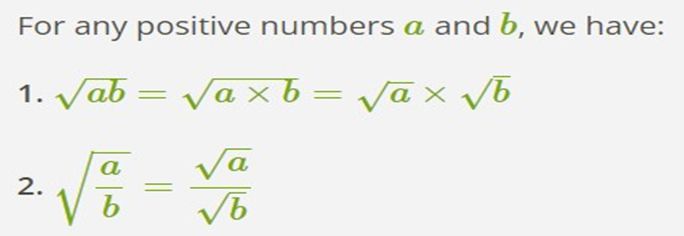
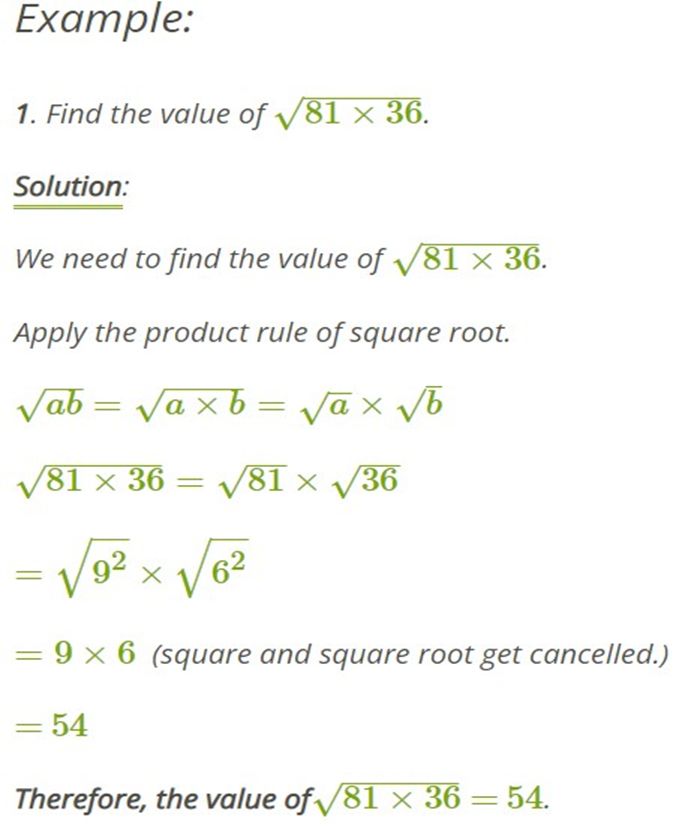
Multiplying identical square root numbers

Approximating the square roots
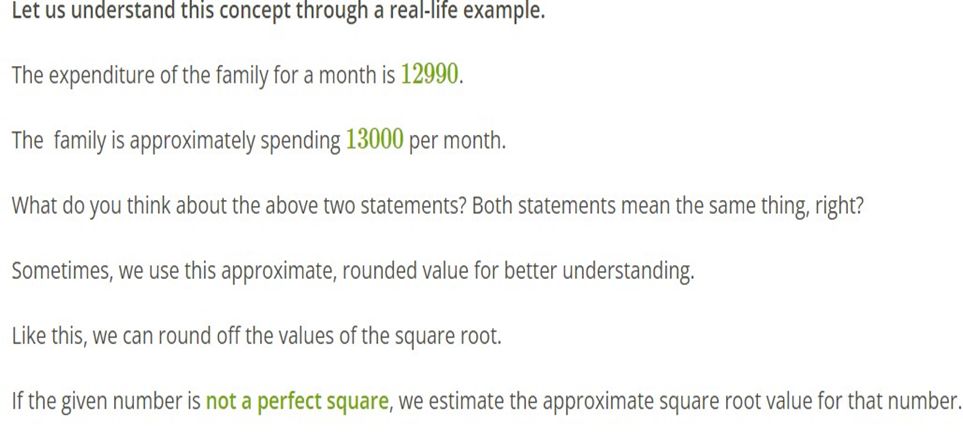
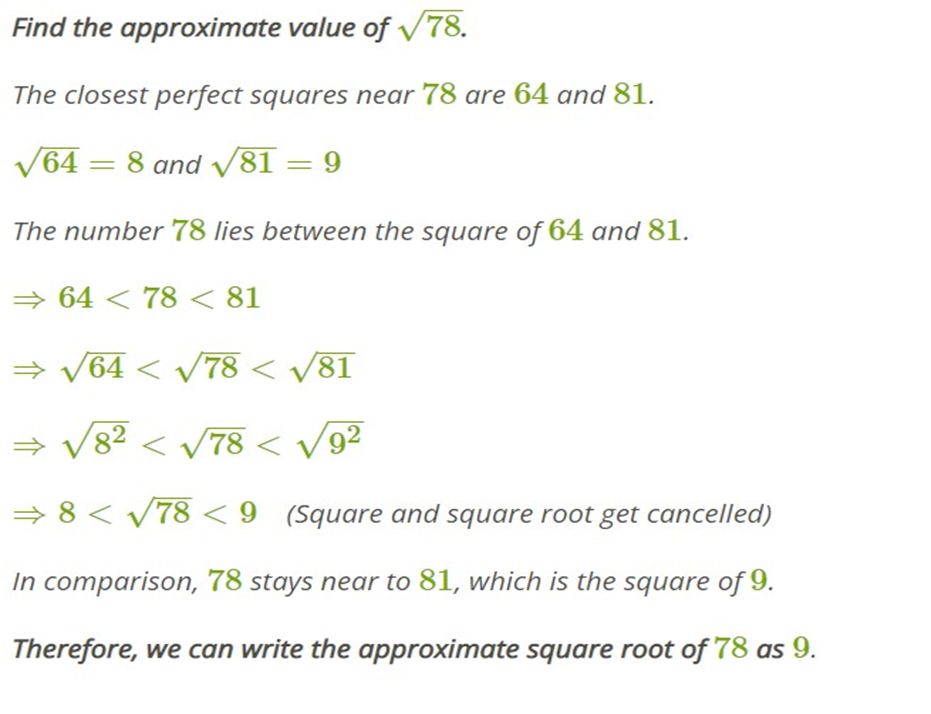

 ReginaTagebücher
ReginaTagebücher
